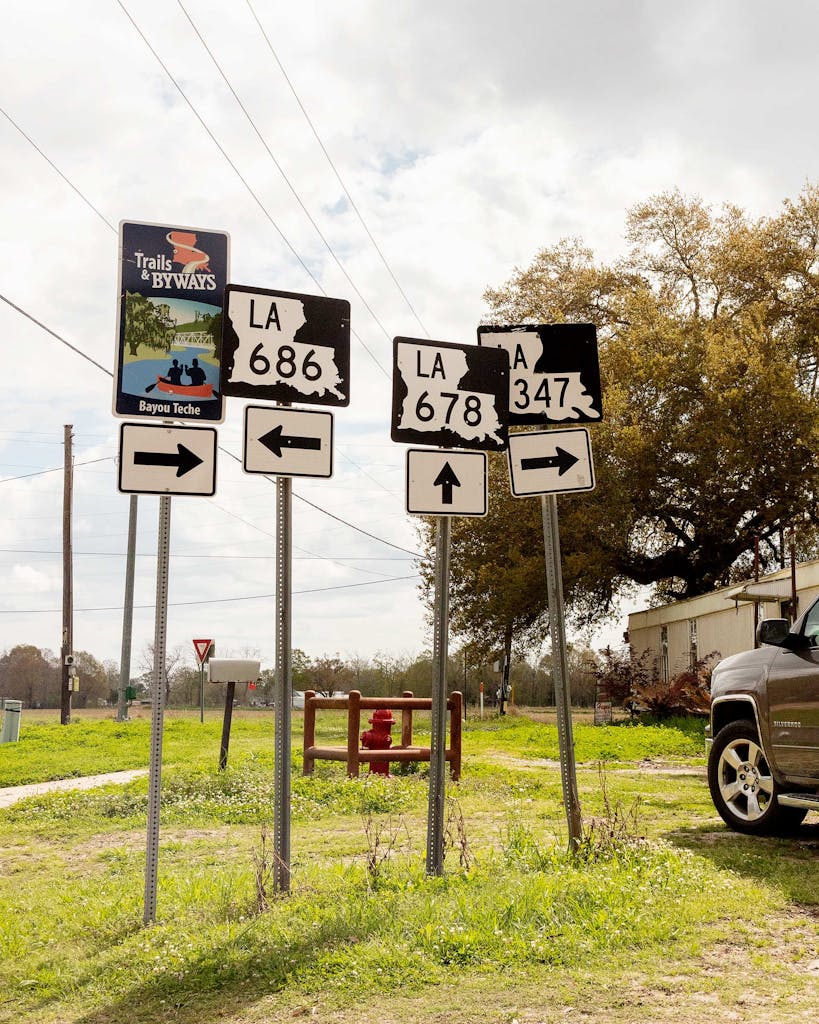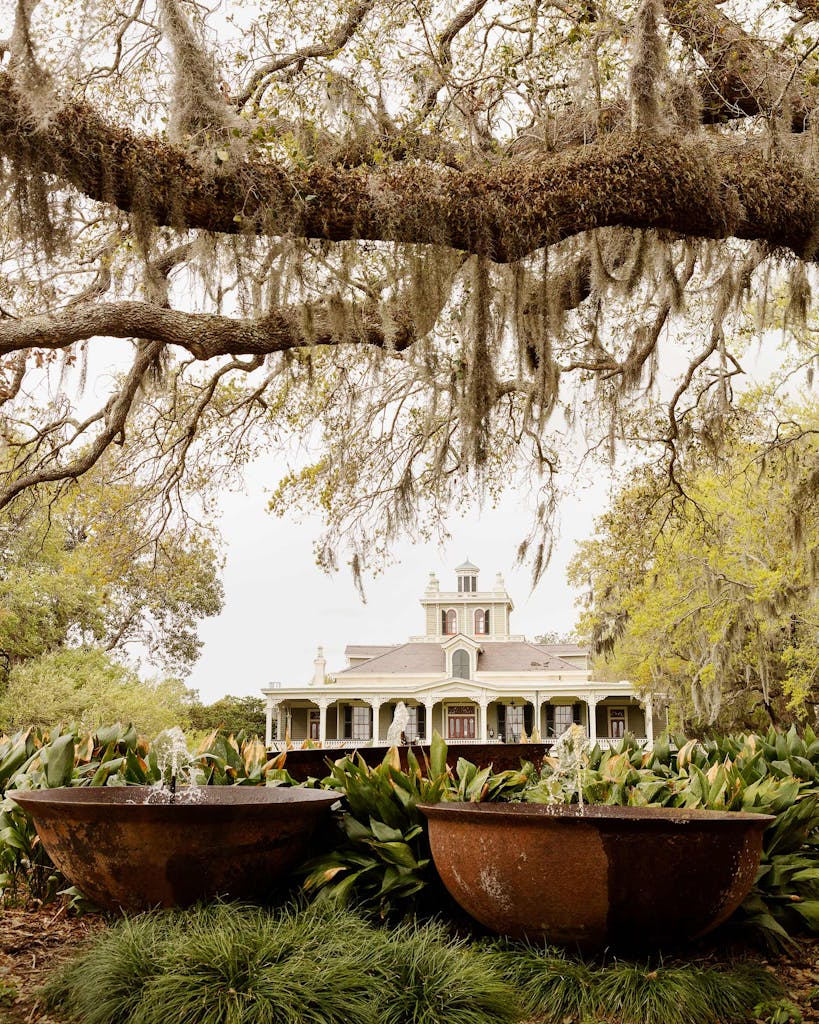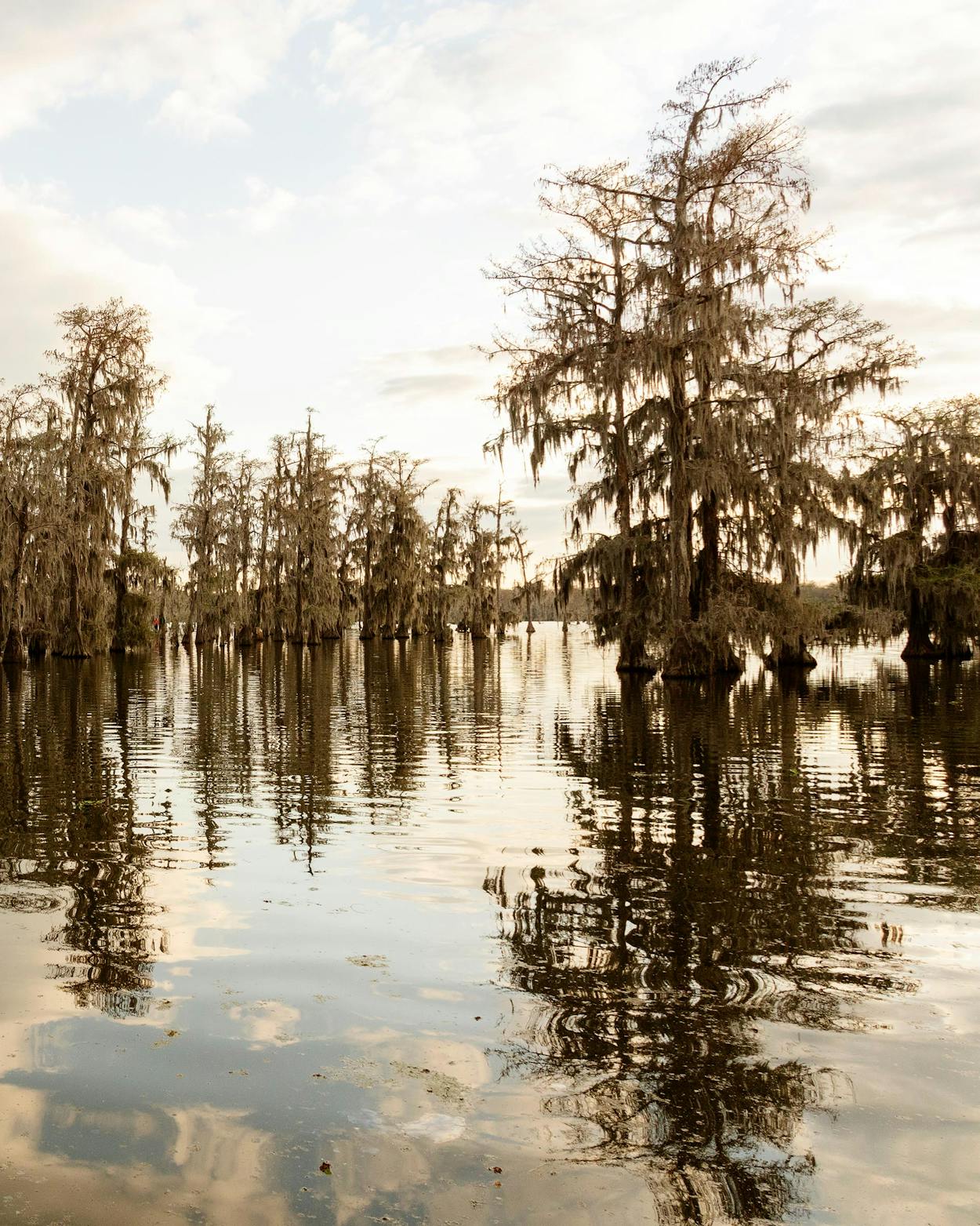In my 48 years, I’ve experienced a few crystalline moments when I’ve tricked time, evaded the rules of physics, and been hit by a wave of wonder. The first time was atop the Acropolis in Athens. I no longer heard the sprawl of moped traffic or worried about which gyro place to hit for lunch. Instead, the present day disappeared. It was awesome, in both the “filled with awe” sense and the Jeff Spicoli, surfer-accented sense. I’ve chased that feeling ever since, discovering it in flashes—during a quiet moment on the Nile; with monkeys in Costa Rica; on a pontoon boat in the middle of Lake Buchanan; in the shade of Santa Elena Canyon, in Big Bend National Park. In such instants, it is as if I’m connected to something larger and am at one with those who’ve come before me—as if I’ve been given a secret portal to beauty, to a place that is tender and precious.
It’s not easy to find those moments. They come or they do not, no matter how much you plan. But in the midst of a rough and scary year, I was overjoyed to find myself in the middle of the Atchafalaya River Basin, gazing at two ospreys circling a bald cypress. I found escape—and awe—in a Louisiana swamp.
My husband, three children, and I like to think of ourselves as an adventurous family. In the first days of the pandemic, we dreamed of places from which we could work remotely if we could just magically transport ourselves: Hawaii? Manhattan? Paris? A year later, the thrill of working from home is gone, and we just want reliable electricity and broadband for all our Zoom classes and meetings. The thought of strapping on an N95 mask and boarding a flight seems less exciting than exhausting. Still, we’ve missed restaurants, concerts, and meeting new and old friends. So when we cooked up the idea of a COVID-19–safe vacation to nearby Louisiana, driving an RV to minimize contact with the outside world, I savored the zing of a new escapade. Besides, they call the Atchafalaya National Heritage Area “America’s foreign country.”
And so, along with our miniature schnauzer, we embarked on a project as ambitious as any of our friends’ impromptu house renovations, homemade breads, or puppy adoptions: we rented an enormous RV (we had never driven one before) using an online service akin to Airbnb for RVs, and headed to Cajun Country.

While my husband, Tip, downloaded “Swamp Pop” and “New Orleans Funk” playlists, I booked tours and peered at maps. We had lived in New Orleans before we had children, but we were looking forward to getting to know a different part of Louisiana, the area around the Atchafalaya Basin, just two and a half hours east of Beaumont. My nine-year-old daughter, Nora—a vegetarian who knows more about flora and fauna than any of us—packed sparkling outfits for swamp excursions. We would need to avoid fais do-do Cajun dance parties, festival crowds, and eating in cozy seafood restaurants. But we were drawn to stories of the largest river swamp in the United States, of twisting bayous, alligators, and hundreds of species of birds: a natural world that was still safe.
Unfortunately, our RV arrived with problems. Before I was aware of them, I oohed and aahed as a thoughtful technician walked me through the exterior and interior of our behemoth on wheels. In retrospect, I should have asked for a manual, a tool kit, the tech’s phone number, or, even better, a hotel suite. I thought it’d be easy to rent and enjoy a 29-foot-long 2019 Coachmen Freelander. I was wrong.
The kids could not have been more thrilled to explore the space: a master bedroom with a cozy king-size bed (but no sheets), a teeny-weeny bathroom (lacking the special RV toilet paper I had ordered), a sweet kitchen with a fridge and freezer (that didn’t seem to work), a table that converted into one bed, a couch that converted into another, and a crow’s nest space over the driver’s seat that my thirteen-year-old, Harrison, immediately claimed as his Fortnite gaming space. “There are hangers!” cried Nora, checking out the closet and many drawers (which would slam open and shut as we barreled along Interstate 10).
“Wow,” said my seventeen-year-old, Ash, who decided, in the end, to stay at his best friend’s house instead of missing school. And thank goodness for that because, while the posting claimed our Coachmen slept eight, I realized right away that four and a schnauzer was going to be a stretch. (“What—is someone supposed to sleep in the shower that doesn’t work?” said Nora three days later.)
Around midnight, a piercing beep began emanating from the RV, which was parked in front of our house. We tried to reach the rental service and the RV’s owner while running to the Valero to get batteries for the fire detectors and wondering if we should cancel our trip. Finally, a text from the RV’s owner explained that the problem was likely a low generator battery. Running the motor stopped the sound. As I lay awake in my house, bags packed with coffee, dog food, rain jackets, chocolate, books to read, a PS4 gaming system, and Nora’s two dozen colors of nail polish, I began to wonder whether—despite our shoestring travels all over the world—a luxury RV vacation to a neighboring state might prove too much for us.
The next morning, a little sleep-deprived, we decided to go for it. As we lurched out of town, I asked Tip excitedly, “How does it feel?” Gripping the steering wheel, he said, “Like a wonky bus.” When a car cut in front of us, Tip hit the brakes, and both kids, and their Zoom-school computers, flew forward, crashing to the ground. The dog whined in terror. We were on our way.


We arrived in Beaumont in time for ice cream desserts at La Real Michoacana before heading to our first RV park, Hidden Lake. We attempted to connect the RV to power and water but quickly realized that we did not know how. Undeterred, we set out our new camp chairs under oak and yaupon trees, opened cold drinks, and enjoyed a quiet night, a yellow moon, and the sweet sound of killdeers. I could hear more birdsong and trucks on the highway, a symphony of “almost to Louisiana.”
The mysterious beeping started again as we crossed the state line and headed to the small city of Breaux Bridge, eight miles east of Lafayette. Settled by Acadians around 1771, the “Crawfish Capital of the World” every May hosts the Crawfish Festival, at which you can enter a crawfish-eating contest—the record is 55 ¾ pounds in 45 minutes—or simply watch the parade and listen to zydeco and Cajun bands.
By the time we reached town, we had found some sort of alarm in a drawer of the RV and switched out the battery. Feeling triumphant, we wandered the historic streets of Breaux Bridge, stopping at Tante Marie for a takeout order of hot beignets and beignets stuffed with spicy boudin. While there, I paged through a book of historic pictures. In my favorite photo, the smile on the face of 1974’s Breaux Bridge Crawfish Queen is bright; the velvet cape arranged in front of her features a glittering, sequined crawfish. We also stopped by Poche’s Market, Restaurant, and Smokehouse—a friend had begged us to bring her back some pork tasso, one boudin link, and two packages of crawfish tails frozen in their fat. (We made sure to order the same, plus a crawfish-stuffed chicken and some pralines for the road.) I also grabbed a red beaded necklace with a plastic crawfish pendant at the visitors center and impulsively preordered a king cake at the Cajun Market Donut Company—in my defense, I did not order one made out of boudin, and I could have.
Although it was getting colder, we had an appointment with Champagne’s Cajun Swamp Tours to see some of the birds and wildlife at Lake Martin, part of the Nature Conservancy’s Cypress Island Preserve, about 9,500 acres of swampland and bottomland. At home, we had looked through our set of Sibley Backyard Birding flash cards in anticipation. We hoped to see alligators, of course, but also egrets, ibis, maybe even a great blue heron.
I entered the Champagne’s Cajun office, and a woman cried, “Baby! You must be Amanda!” It made my day. We hopped on a boat with a guide and, before we got far, saw three baby alligators sunning themselves. We all wore masks, but even with half of Nora’s face covered, I could see her bright blue eyes wide with excitement. We entered the spooky, otherworldly swamp made up of bald cypress and tupelo trees.
“You can catch a catfish over fifty pounds right here,” noted our guide, Jimmy Blanchard. “Ooh, hey,” he said. “Look! Nutria!” We rushed to the side of the boat, eager to see the large, beaver-like swamp rodents. We watched as a mother nutria led her babies into the water, swimming away from us. One baby remained defiantly in the sun. “I like that one,” said Nora. “She’s not scared.”

Along our sixty-minute tour, we saw so many winged creatures—black-bellied whistling ducks, cormorants, great blue herons, ospreys, ibis—that Tip noted he’d seen more birds here than in his travels along the Amazon River. We paused to watch a couple of ospreys screeching above us fighting over a fish. “Well, isn’t that something,” said Blanchard. We were silent, reverent. I whispered, “Yes.”
We stayed that night at the Cajun Palms RV Resort, feasting on takeout pasta from the nearby restaurant Crawfish Town USA. After dinner (and bread pudding with rum sauce), we finally figured out how to hook up the electricity and water. We enjoyed a night of movies and flushing the toilet. It was chilly and raining the next morning, and I was envious of the couple who drove by in a golf cart outfitted with its own custom rain jacket. We tried to crank up the heat, but all we could get was cold air. Indefatigable, Tip decided that we would drive along the Bayou Teche, a 125-mile-long waterway, “to where the land ends!” The drive took us through Franklin and other small towns, and we spotted the Old Spanish Trail, which looked like a great spot for sunnier weather. For lunch, we stopped for red beans and rice at the Coffee House in Jeanerette, where Harrison asked me to go inside and order more. “This is the healthiest lunch we’ve had in Cajun Country,” he said. Sheepishly, I pulled out the pralines, which melted on our tongues: buttery, sugary pleasure.
In New Iberia, we visited Jefferson Island and toured the glorious Rip Van Winkle Gardens in the rain, spotting a few blooming camellias and vowing to return to see the roseate spoonbills. A lovely cottage beckoned, and I must admit I almost booked a room and ran screaming from the RV, which was by now littered with dirty socks and takeout containers. That night, right about the time we discovered that water was leaking from somewhere and the owners let us know they couldn’t fix the heat remotely, Nora commented, “You know what? We are just not RV people.” I had to agree. “How do you like the RV?” I asked Tip just as the owners finally called us back and told us to unhook the water and stop showering and flushing. Tip, who is kind and diplomatic and six foot two, said, “This RV . . . is not built for someone of my height.”
Pit Stop!
New Orleans chef Nina Compton, of Compère Lapin, in the Warehouse District, stands out in this restaurant capital. Her Caribbean roots and French culinary training meet her love of Italian cuisine in dishes such as curried goat with sweet-potato gnocchi and cashews. —L. Kasimu Harris
By the time of our reserved Atchafalaya Experience tour, we were weary. Cold weather and an RV without heat or water had made us yearn to go home. But we decided to meet the father-and-son tour guides, both named Kim Voorhies, for a four- to five-hour private tour. Harrison said this sounded like a lot of time in a swamp. In the end, I could have spent four to five hours more.
The Voorhieses’ olive-green boat was welded by a friend to their exact specifications so that they could move adroitly through the swamp. Tennis nets strung up along the sides help protect against invasive jumping Asian carp, which both Kims insisted were scary as hell—they could leap high in the air and, without nets, right into your face. We glided deep into the swamp, seeing wood ducks, red-tailed hawks, and barn owls. Kim Jr. told us they were beginning to offer packages that combined their longtime birding tours with homemade meals.
Kim Sr. interrupted him with a high-pitched whistle. Surprised, we looked around. And then we heard an answering call: an osprey high in a nest. Kim Sr. told us ospreys mate for life and showed us two pairs of juvenile ospreys. “They been listening to me since they were babies . . . I’ve been going out to that nest since they hatched out their eggs, and when they got on top of their nest, I pulled up, and the babies would kind of dance and look at me. And the mama would sit there and dance.”
“You’re really talking to the bird,” said Harrison. Kim Sr. responded, shrugging, “After you do it twenty-one years, you can talk to anything out here.” He steered the boat past a tree.
They told us that seeing little blue herons meant that the migratory birds were coming back. We heard a black-bellied whistling duck, and Kim Sr. commented, “They sound like flying pigs—a little squeal to them.” In a magical, ancient cypress forest, we saw yellow- and black-crowned night herons and a flock of ducks lifting into the air. “I’ve eaten everything that crawls, runs, and flies around here, but the tree duck is the best-tasting,” he said.
Both father’s and son’s passion for their home was moving. They told us how in the fall the cypresses glisten; Kim Jr. likes to take photographs in the thick morning fog—he posts them to his Facebook page. At the end of the tour, Kim Jr. gave us a stunning photograph from the cypress forest to remember the day. I was thankful for the picture, which I will hang in my office as a reminder of a shared moment so far from our ordinary days.


On our last day of vacation, we climbed aboard a bright orange van to join the ebullient Marie Ducote-Comeaux on her Original Cajun Taste tour, a three-hour journey with five stops at restaurants in the Lafayette area. We wore masks when we weren’t sampling dishes and remained six feet from others on the tour. Ducote-Comeaux, a proud Cajun, told us hilarious stories and insisted, “We’re a mélange around here—a mixture of cultures . . . Not a melting pot, a gumbo.” Speaking of which, we savored every bite of the chicken-and-sausage gumbo at Ton’s Drive-In, in Broussard. She also schooled us on the different ways to make boudin, at NuNu’s Fresh Market, in Youngsville. “Eventually, one is going to speak to you on a spiritual level. That’s your boudin!”
We spent our last two nights at the Lafayette KOA, in Scott. Among the campground’s amenities were a sprawling pond with paddleboats, a mini golf course, an arcade, and two bathhouses for long, hot showers. We made a fire in the firepit and listened to Tip’s playlist, humming along to “Cajun Moon,” by J. J. Cale. In the morning, we would head back to Texas. I hoped I could hold on to the fragile peace I’d felt in the Atchafalaya Basin, watching birds circling their nest, Kim Sr. speaking to the osprey and the osprey answering back.
I will spend a while trying to understand the lesson from this trip as I move forward in a perilous world. Maybe I need to learn from the Voorhieses to revere my home, to truly connect to the beings around me and find joy and purpose in that communion. I think of my next-door neighbor, who gave us a Christmas tree when my son was in the hospital and I didn’t have time to buy one. I think of the screech owl that lives in the owl box my family made me for my birthday. I think of the flocks of American robins who had to fly all the way to Texas to find Ashe juniper berries in bloom this year and who needed us to set out bowls of water for them when they finally arrived.
On our last night on the road, I dreamed of an osprey opening its wings and soaring across a sky as clear and bright as my daughter’s eyes.
Amanda Eyre Ward is an Austin-based writer. Her most recent novel, The Jetsetters (Ballantine Books), was published last year.
This article originally appeared in the May 2021 issue of Texas Monthly with the headline “Crawfish and Wonder in Cajun Country.” Subscribe today.







